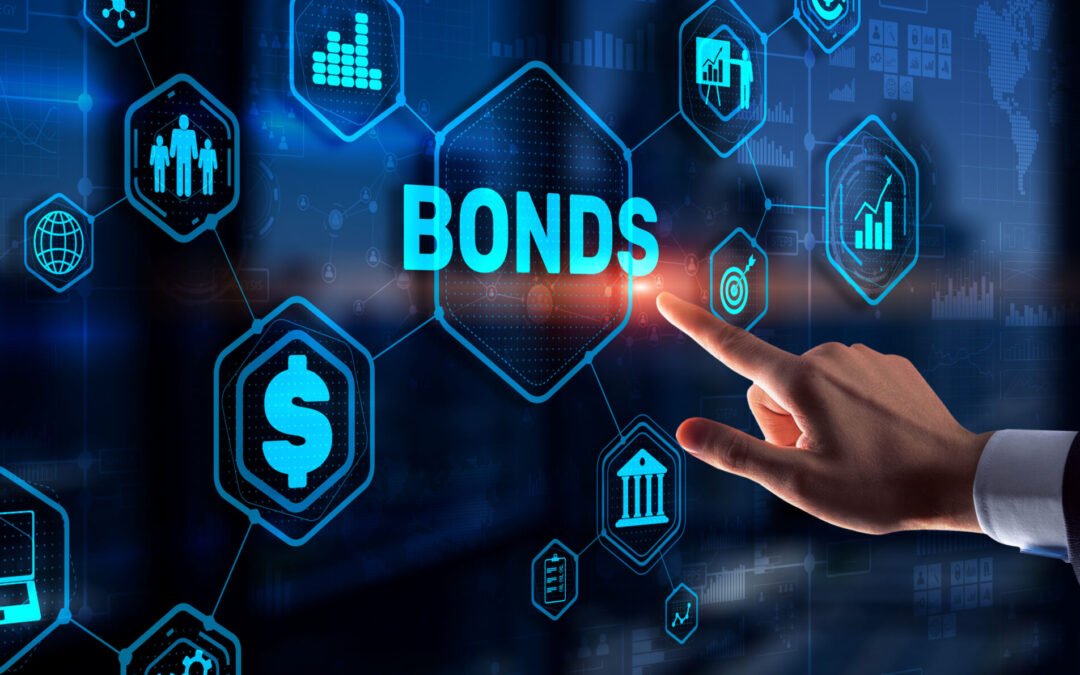Matt’s Note: Before we get into the Treasury bond talk, a special announcement…
I, along with the rest of the Money & Markets team, was meeting with our chief investment strategist, Adam O’Dell, the other day when he mentioned wanting to get back into writing to you all on a regular basis again like he did with our old Money & Markets Daily newsletter.
We were all ears considering Adam designed our incredible Stock Power Ratings tool! What’s better than hearing from the man whose system drives everything we do at Money & Markets?
We’re still hashing out the details, but we have nailed down one thing: Look forward to Adam chiming in during our Tuesday edition of Stock Power Daily going forward.
We can’t wait to share what Adam has for you, but for now, we thought his recent look at what’s going on with the distressed banking sector was a must-read. Maybe you caught it in The Banyan Edge, but if you didn’t (or even if you did) read on to see his analysis of risk in this market. — Matt Clark, chief research analyst, Money & Markets
Before You Buy That Treasury Bond
Everybody knows that trading is risky and buying a 30-year Treasury bond is safe.
Right?
There’s actually an argument for precisely the opposite.
Hear me out…
Exhibit A is the recent collapse of Silicon Valley Bank (SVB).
What was once the 16th largest bank in the U.S. is now the largest bank failure since Washington Mutual’s in 2008.
But it wasn’t reckless lending to “risky,” subprime borrowers that brought down SVB.
It was the bank executives’ decision to buy supposedly “safe” 30-year T-bonds — and a similar class of income assets, federal agency mortgage-backed securities (MBS) — at paltry yields just as the bond market was making what’s been widely called a “generational top.”
More so, it wasn’t a default of those 30-year Treasurys or MBS’s that led to the bank’s demise … it was simply the rise in interest rates.
And it’s all the Federal Reserve’s fault.
But before we go down that rabbit hole, we need to talk about the not-so-hidden risk in owning these long-dated fixed-income assets.
I bring this up because right now — with high inflation and Treasury yields at their highest levels since 2010 — it seems like a good time to buy T-bonds. They’re often called a “risk-free return,” which is mostly but by no means completely true.
In reality, any investor who doesn’t understand how these assets work can find themselves in a troubling position.
Investors big and small must understand these risks before they make any investment decision. Today, I’ll put a spotlight on those risks so you can be confident in whatever move you decide to make.
And I’ll go a step further … and make the case for why a long-term fixed-income asset likely pales in comparison to making simple, low-stakes trades a few times a week.
“Risk-Free” Treasury Bond in Name Only
There are two categories of risk you bear any time you buy a bond: credit risk and duration risk.
Credit risk is the risk of the issuer of the bond defaulting. Plenty of corporations have defaulted on their bonds, but the U.S. government never has. And that’s why the 30-year Treasury bond is often seen as the safest place in the world to park capital.
But as we saw with SVB, that doesn’t mean even “risk-free” Treasury bonds can’t destroy a portfolio. That’s because of duration risk.
Duration risk is all about the relationship between interest rates and bond prices.
Think of it like this…
If you own a 30-year bond yielding 2%, and then a year later newly issued 30-year notes are yielding 3%…
And you want or need to sell your 2% 30-year bond, for whatever reason…
Why would someone buy your 2% 30-year, if they could just buy the newly issued 3% 30-year instead?
The answer is … they won’t. At least, not unless you discount the price to make up for the lost interest.
That’s why bond prices go down, when interest rates go up.
And of course, SVB executives learned this all too well…
The long-dated fixed-income assets they decided to buy throughout 2020 and 2021 — when interest rates were low and bond prices were high — lost a ton of value when interest rates climbed higher and bond prices spiraled lower.
It’s been reported that SVB’s Treasury and MBS portfolio was yielding a lowly 1.6% at the end of 2021…
So when the yield on newly issued batches of those securities rose sharply to the 5% range by the end of 2022, the bank suffered a loss of $15 billion or even more.
The bank needed to sell the bonds to meet its depositors obligations. So it had to discount the price to do so … and sold them for a lot less than it bought them for just a year or two earlier.
So much for the idea of 30-year Treasury bonds being “safe,” right?!
To be fair, if you intend to hold a 30-year T-bond to maturity, you technically have nothing to worry about. So long as you are never in a position where you need to pull those funds for 30 years… (And who can say that with absolute confidence?)
The other risk, naturally, is that the U.S. government goes belly-up. (Though, in that scenario, you have bigger problems.)
So what should you do instead?
We’re getting there, but first, we have to understand why we’re here, asking these questions, to begin with.
The End of the Free Money Era
I said earlier that SVB’s collapse was arguably the Fed’s fault…
And that trading may be a safer way to grow your investment account than 30-year T-bonds.
I sense a raised eyebrow, so let’s pull on those strings now.
First, no shortage of words have been written about the Fed’s reckless and long-lasting zero-interest rate policy, which created the era of “free money.”
As an emergency response to the 2008 Great Financial Crisis, the Fed cut the fed funds rate to zero. But then, for some inexplicable reason, as both the economy and market were recovering, it left interest rates alone well into 2015.
The Fed attempted a meager rate-hike cycle into 2018, but then reversed course when stocks stumbled in the fourth quarter of that year.
And then, of course, the Fed was highly accommodative in response to the 2020 COVID-19 pandemic.
All told, this free-money era that lasted from 2009 through 2021 was a boon to borrowers, consumers and stock market investors.
But it was financial repression for lenders and savers.
A bondholder is both a saver and a lender … you’re loaning your money at the safe assumption you’ll get it back at maturity.
So when the Fed cuts its federal funds rate all the way to zero and then leaves it there, it’s nearly impossible to earn a satisfactory yield in the safest type of Treasury bond: short-dated Treasurys, such as the two-year T-note, or the two-month T-bill.
The Fed’s folly in this regard had a knock-off effect that you may see called a “reach for yield.”
Unable to earn a satisfactory yield in short-dated Treasurys, investors were lured into buying things that were further out on the risk curve — long-dated Treasurys, which typically pay a higher yield than short-dated ones.
Even those earned a middling 3% on average for the last decade … hardly beating inflation.
So investors were forced into riskier “high-yield” bonds and stocks.
SVB didn’t go so far as buying obvious risk with “junk” bonds. But it ought to have been buying short-dated bonds, rather than the slightly higher-yielding long-dated bonds and MBS the bank executives decided to buy.
This decision locked it into what would become a market-lagging yield and set the bank up for significant losses.
To put a pin in it: SVB executives grossly underestimated how much interest rates could change, and the investments they purchased were woefully fragile to even a slight change in interest rates!
And that leads me to a final thought for today…
Where Traders Beat Bondholders
Short-term traders have a special skill that no long-term bondholder can obtain.
They have the flexibility to adapt to changing market conditions, whereas bondholders cannot.
I’ve talked about this benefit of agile strategies a number of times in my short-term option-trading service, Wednesday Windfalls.
Each week, we make three trades on Monday afternoon, and then we close them out two days later, on Wednesday afternoon. Sometimes we take home a win … sometimes a loss. But overall, we win more than we lose and pocket profits in the long-run.
And even if there’s no promising trade that week, we can sit safely in “cash” and reassess the market’s new environment the following week.
Again, that’s something someone holding a 30-Treasury bond can’t do. They are “locked in” — for better or worse — for 30 years … at the mercy of interest rates and the market price of their bond, if they are forced to sell for any reason.
Of course, my Wednesday Windfalls strategy isn’t the only way to adapt to a fast-changing market.
My friend and colleague Mike Carr is an expert on short-term trading strategies. He’s studied them for most of his life, and puts his money where his mouth is — trading every day and actively managing his portfolio.
Lately, he’s offered his Precision Profits subscribers a “peek over his shoulder” with a live Trade Room where he tests and trades new strategies.
One new strategy, what he calls his “9:46 Rule,” is designed to pull 50% gains out of the market in as little as five minutes and no longer than two hours.
In a way, it’s the polar opposite of the 30-year bondholder. Mike aims to make more money in two minutes than a bondholder will make in years.
I understand that speed of trading is not for everyone. But at the end of the day, I urge you to think of the amount of time you’re locked into an investment, or “trade,” as a measure of risk.
In a market like this, the longer you’re locked in (with an asset such as a Treasury bond) … the more you risk being caught wrong-footed and whipped around.
Short-term trading with sensibly small stakes and an acknowledgment that not every trade will profit is a viable and often winning strategy, especially now as higher interest rates weigh on stock and bond prices alike.
To good profits,

Adam O’Dell
Chief Investment Strategist, Money and Markets
P.S. If this type of trading does suit you, I encourage you to check out Mike’s 9:46 Rule.
It’s a way to completely turn the tables on volatility, spend as little as five minutes a day trading, and get well ahead of long-term investors struggling with this bear market.




